My inquiry unit plan is focused on the topic of Refugees. I chose this topic as it is both topical in terms of current events and also relevant to the Grade 5 Social Studies curriculum. An inquiry into refugees and immigrants will also encourage the development of a range of Core Competencies as outlined in the new BC curriculum.
I plan to use this unit in the coming school year with our Grade 4/5 classes. I will meet with the teachers and discuss the inquiry plan, encourage their own input to make changes and/or additions, and then go forth from there to co-teach the unit.
It is my hope that students will finish this unit with a new understanding of what it means to be a refugee and what our role as Canadians is/can be in terms of welcoming and supporting refugees in our communities. I hope that students will develop a new capacity to appreciate multiple perspectives and to be critical thinkers. I believe that this is especially important in the study of this topic when we consider the messages we receive from media. Through this unit I hope that students will be able to bring together their own values and beliefs, combined with new learnings, to develop an attitude of respect and appreciation for diversity. As stated in the Core Competencies, I hope students come away from this unit with values that will encourage them to be change-makers, to be defenders of human rights, and to be able to stand up for what they believe in with confidence and also the evidence to support their beliefs.
It is important that students realize that they can make a difference. You do not need to be an adult, or in a position of power, to make a difference in someone’s life and this is a message that I hope students will come to understand during this inquiry unit.
The following table outlines the Essential Questions of our inquiry. Of course, this does not mean that these are the only questions that will be considered as it is important to be open to the questions that arise from students along the way. The table also lays out the key knowledge that students will learn and the skills they will use, as taken from the new Grade 5 Social Studies curriculum (BC Ministry of Education).

This unit will also aid in the development of certain Core Competencies as outlined below:

I am basing the format of this Inquiry Plan on a project I planned collaboratively with a group of 5 other teachers (4 classroom teachers, Indigenous Education Teacher, and myself) at my school a couple of years ago. The Inquiry (entitled Two World Meet), on Indigenous Peoples and the effects of European Exploration, was inspiring for all teachers involved as it illustrated to us the power of both collaboration amongst staff (and students) and the process of Inquiry. Based on the success of that project I plan to follow a similar model for this Inquiry, I have however, made some adjustments based on my own new learnings and on reflections our collaborative group made about our Inquiry journey.
For this Inquiry plan I have decided to use the Inquiry Model that we developed as a staff at Brentwood Elementary a couple of years ago. To create this model we spent time looking at a variety of different models including the BCTLA Points of Inquiry model and the Alberta Learning model in order to then create one that we felt would work best for our community. We also developed our own common definition Inquiry in order that all staff have a common understanding to frame our teaching and learning.
Brentwood Elementary’s Inquiry Definition and Inquiry Model
A personal quest for understanding that begins from a sense of wonder.
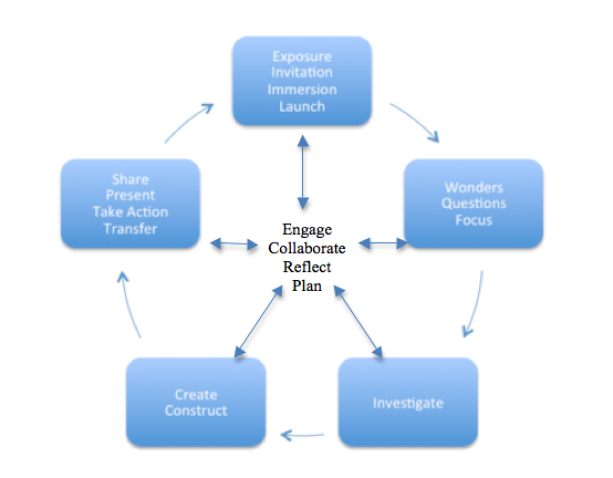
Inquiry Plan Calendar
As the teacher planning a unit of inquiry it is important to have a general idea of the time that you have for the Inquiry to unfold. It is equally essential, however, to be able to be flexible and take cues from the students in terms of the planning once the inquiry is underway. Below is a general idea of the time frame of this unit, however, later (as discussed in Stage 2 below) it will be important to take into consideration student input when working out a more specific calendar outlining the inquiry investigation and creation stages.

It is important to also ensure we help students learn to independently recognize when they are ready to move on through the inquiry stages and to help students understand that we may not all be ready to move on at the exactly the same pace. I very much appreciate the questions included in the Empire State Information Fluency Continuum (2014) that encourage students to reflect at the end of each stage on whether they are ready to move on. Before moving onto the Construct stage, for example, one of the questions students are prompted to consider is if they considered more than one perspective in their investigation, an important consideration for our students if we are hoping to teach them to become critical thinkers (New York City School Library System, 2014, p.6). Posting questions such as this one in the room and referring students to these questions before they move stages would be an effective way to help students take responsibility for their own learning.
Stage 1: Invitation – Launch – Exposure – Immersion
Invitation & Launch
Students will be invited into this Inquiry Journey on Launch Day. Launch Day is a day in which all students involved in the project are divided into mixed class groupings and rotate through stations taught by the different teachers involved. Each Launch Day station focuses on a word or concept that will prove important to this unit as opposed to specific content itself. Launch Day stations will depend on the number of classes/teachers involved, however, ideally the following stations would be included in the Launch of this Inquiry:
| Station |
Description/Ideas |
| Empathy
|
Walk a Mile in My Shoes – Shoebox Activity:
o Gather 4 or 5 different shoes (that are of different styles, sizes and condition)
o Create a short story to go for each pair of shoes that is about the owner of those shoes. Include a couple discussion questions as well. Paste story into the lid of the box.
o Have a student choose a shoebox and read scenario out to the class.
o Discuss story and discussion questions reflecting on how it might feel to be in that person’s shoes.
o For more details about this activity see the following blog:http://corneroncharacter.blogspot.ca/2012/07/empathy-in-shoe-box-guest-post.html |
| Two Sides to Every Story (perspectives)
|
The story Duck! Rabbit! by Amy Krouse Rosenthal is a great resource for opening a discussion on the importance of considering differing perspectives. |
| What does it mean to be Inclusive?
|
Ask students if they know what it means to be inclusive. This can be done through a Chalk Talk activity:
o Write word inclusive on the middle of the white board
o Then students freely come up to board when there is a marker available and write something up that connects to the word inclusive
o This activity is done in silence, students freely move from desk to board, but can only write one word/idea each time before having to sit down and wait for another marker to be available
o Once it seems like students are done, stop and discuss ideas that have been reordered on the board around the concept of inclusiveness |
| Human Rights
|
It can be valuable at this point to go over the idea of Human Rights (Universal Declaration of Human Rights and the Charter of Rights and Freedoms) so that students can use this later to determine whether actions towards refugees and immigrants have always be respectful of this rights. They can consider the question, are these rights truly universal? Some great resources for this topic include:
o We Are All Born Free: The Universal Declaration of Human Rights in Pictures by Amnesty International
o We Are All Born Free short film: https://youtu.be/x9_IvXFEyJo
o Dreams of Freedom by Amnesty International
o I Have the Right to be a Child by Alain Serres
o Every Human Has Rights by National Geographic (available online through National Geographic Kids, a database that our school district has access to through ERAC.) |

Adapted from book How to Be an Explorer of the World by Keri Smith
Students will have prepared special notebooks to use for Launch Day to record new learnings and to then use throughout the Inquiry Journey. Having dedicated journals for inquiry is important not only for student buy-in but also to acknowledge the fact that all the learning along the way that will be recorded in this journals is just as important as whatever product they may end up with at the conclusion of the journey.
The front of student Field Notebooks will include the message (to the right) to remind students of their role in this inquiry journey. Inquiry is not passive learning, inquiry is an adventure.
Exposure & Immersion
During this stage students will be engaged in inquiry-based lessons to teach some of the necessary content that will help drive their motivation to inquire further into the topic. Before embarking on any inquiry it is important that students are introduced to some content. It is unrealistic to expect that students will be able to jump into inquiry without first having some background knowledge on the subject. The teaching of some content allows students to build a foundation of knowledge. During the teaching of content it is not essential to cover every possible aspect of the topic but just enough to give students a general understanding and to instil in them the motivation to learn more. During this stage students will be taught lessons that are collaboratively planned by the team of teachers involved and, therefore, lessening the load on any one teacher. Lesson plans can be stored in a shared Google Drive folder for easy access by all teachers.
Stage 2: Wonders – Questions – Focus
Students will now be almost ready to dive into their inquiry adventure. They have developed a foundation of background knowledge and sparks have been lit in terms of areas of interest. They will be eager to embark on their own inquiries and to delve further into areas that resonated with them. Before beginning this stage, however, it is important to go over certain expectations and skills that will helps students be successful in their Inquiry Journeys and so comes Launch Day II. Launch Day II has a similar structure as the first Launch Day in that students will be back in their mixed class groupings and each teacher will be responsible for delivering one of the stations. The stations for Launch Day II, as well as some ideas for the content of the stations, are described in the following table:

Preparing for Inquiry Template (for Deep Questions Station): Preparing for Inquiry (developed by our collaboration group during Two Worlds Meet inquiry project, modified to fit this project).
Following Launch Day II students will decide on their Essential Question. They may use one of the Essential Questions shared above, or, if they are eager to use their own Essential Question that will be an option as well. Students will complete the Preparing for Inquiry (see above) reflection when preparing for their Essential Question.
At this time it can also be very valuable to work with students to create a calendar to help structure the next phases of inquiry. This calendar will outline the expected time to be spent on the different aspects of inquiry in order to help students plan their time effectively. It is important to complete this step with students as it gives them a voice in the process and recognizes them as valuable contributors to the learning and planning process. This will lead to a greater sense of ownership over the project as opposed to simply being told what to do, the students are given a voice in the process.
Stage 3: Investigate

Providing students with investigation folders can be useful in helping students keep all their work together. Field Notebooks can also be stored inside.
Students will now spend time immersed in the investigation stage of inquiry. It is important to recognize that this stage is busy, messy, and can sometimes feel chaotic. What can be so valuable is coordinating investigation times with another class who is also involved in the inquiry as this allows for greater possibilities and collaboration. When you have two classes involved and the teacher librarian you all of a sudden have three adults available and 3 spaces for students to work. The messiness of inquiry can feel so much more manageable when spread amongst the school in different classrooms, the Learning Commons, hallways, and the computer lab. Not only is it more possible for three adults to supervise but to also check in with students about their progress. This collaborative approach to the investigation periods also allow students the opportunity to move outside their classroom walls and to mix with other teachers and students. This makes learning so much more natural and authentic and strengthens the sense of community amongst students in different classes.
Resources
It is important to ensure that students have access to a variety of resources to use in their inquiry investigation. These resources should be at an appropriate reading level and should also include mixed media formats. For a curated collection of resources for this unit please see the following presentation:
https://docs.google.com/presentation/d/1q5s0ff56ThG1Tz93dMUef8TyjK2u-izC-oirtatRY5U/edit?usp=sharing

Inquiry Resource Bins
During our Two Worlds Meet Inquiry project we organized our resources in resource bins. We found this to be a practical way to store resources as it allowed for easy sharing amongst the multiple classes using the resources. Resources were put in bins based on theme and could be easily used by individual or small groups of students. These resources bins included both text resources and physical artifacts that were related to the different inquiry questions.
In addition to the Resource Bins it is important to provide opportunities for online investigation. These online resources can be accessed by students in a variety of ways, either at school in the Computer Lab or on the school iPads, or at home. On our Learning Commons website I have collected websites that are applicable to the different projects students are engaging in and this acts like a digital Resource Bin in that they can go to the website and be guided to age appropriate resources.
We also have access to a variety of online databases that can be accessed through our Learning Commons websites. These databases are very valuable and it is important that students are taught about how to use them prior to the investigation stage of inquiry so that they are able to independently navigate the sites for information relevant to their Essential Questions.
Formative Assessment
Assessment during the investigation phase involves observations and conversations with students. This formative assessment is casual but ongoing and can be done by the teachers, teacher-librarian, and the students themselves. It is valuable to discuss with students what ‘on task’ behaviour during investigation periods looks like and this discussion could lead to the creation of an on task inquiry behaviour checklist established collaboratively with students. This checklist could be posted in the classroom and referred back to throughout the process in order to reflect on how students are doing. Students are expected to begin taking responsibility for their own learning, and as teachers it is our role to help guide students in this process. One on one discussions throughout the investigation period can be very valuable in terms of assessing how students are doing and what support they may be needing.
Stage 4: Create – Construct
Students will be creating an artifact to share their inquiry learning. The format that the artifact will take is up to each student. It is important to allow students the opportunity to have choice in their learning and one way to do that is to allow them to choose how they would like to share their learning based on their own interests and strengths. Students may decide to create a poster, a Google slides presentation, a powerpoint, a model, a video, a game, a lapbook… the options are (almost) limitless. Using our school set of iPads students may also choose to use one of the apps to share their inquiry. Some tools we have found very effective and user friendly for our elementary students include Adobe Spark Video, Draw and Tell, ChatterPix Kids, Popplet, PicCollage, and also the iPad camera itself to film or take pictures of learning. It is important to have discussions with student in terms of what they will be creating and to help students make a plan for how they will carry out their goal. Teaching students to plan is an important part of helping students take responsibility for their learning.
Stage 5: Share – Present – Take Action – Transfer
Share & Present
When students engage in inquiry they become invested in their learning and are, typically, excited to have the opportunity to share their new knowledge with others. There are many different formats that this sharing can take, one such option being sharing through an Inquiry Museum. In an Inquiry Museum other classes as well as community members would be invited to see the students’ learning and to talk to the students about their inquiry journeys. I think it is important to remember that while the students will all have their final artifact to display it is just as important to display the work students did along the way – as that work is such an integral part of the inquiry process. Displaying student Field Notebooks (in which students recorded learning throughout unit) would help to demonstrate the journey, as well as displaying pictures of the students engaged in different parts of the journey. As we teach our students that inquiry is more about the process than the final result it is important that we also communicate this to families who may be more accustomed to the traditional summative mark on a final project as opposed to taking into consideration the work that happened to get there.
Take Action – Transfer – Reflect
Inquiry does not just end with the final product, much like it does not begin that way. It is imperative that students are given the opportunity to reflect on their learning and the new understandings reached through the inquiry process. The reflection process would also be very valuable if it included a chance for students to reflect on the Core Competencies used during the process. Inquiry and Core Competencies go hand in hand and I believe that encouraging students to reflect on the interconnectedness of the competencies with the inquiry process would be valuable as it shows students that these competencies are a natural part of learning and not actually something new. Students should be able to highlight each core competency with an “I Can” statement which they would then support with evidence from their inquiry. For example, for the competency of Communication a student may reflect saying, “I can share new information I have learned with an audience” and support that with evidence about sharing his/her inquiry journey with peers and community members at the Inquiry Museum.
It is also important to allow the community an opportunity to reflect on the learning they gained from attending the Inquiry Museum and speaking with the students about their learning. This not only gives visitors a chance to reflect but also demonstrates to students that they have an important role in teaching others and that though they may be children, they have so much to share with their peers and community. An example of one way to achieve this community reflection is though a post it wall such as the one illustrated below. For a previous Inquiry Museum at our school we encouraged visitors to consider three questions at the conclusion of their visit and while a different topic, I believe that these same questions would be relevant to this inquiry project on refugees.
- What have we learned from the past?
- What are we doing in the present?
- What can we hope for the future?

Summative Assessment
The summative assessment of an Inquiry project is not what may be seen as a traditional final assessment. It is made up of the formative assessment from along the course of the journey as well as the students’ self reflections. It can also be valuable to include a written comment based on the final artifact, perhaps in the form of Two Stars and a Wish. Fontichiaro (2011), in her article “Nudging Toward Inquiry: Summative Assessment” suggests using creating a rubric to assess inquiry in that rubrics can provide students with detailed feedback while being less time consuming than writing written comments for each student (p. 12). I believe that in order to make the rubric more effective, however, it should be collaboratively created with students. This gives students a voice in the assessment process which, in turn, will lead to the assessment being more meaningful. We do not give letter grades in grades 4 and 5 in our school district and so this is not something that I would assign to an inquiry project. Not only because it is not a requirement, but also because it is simply not useful for students and their learning.
Conclusion
I look forward to having the opportunity to work collaboratively with our Grade 4/5 team to bring this inquiry to life in the coming school year. The inquiry journey is one that leaves a lasting impact on those involved in terms of the learning that results and the opportunities for authentic collaboration. While this plan lays out the groundwork for the inquiry unit, it is important, that as teachers, we remain flexible throughout the process. We must remain cognizant of the fact that inquiry is about the journey, and while a journey can be planned to some degree, journeys can also take unexpected twists and turns. We must be willing to go with our students and follow their lead as they learn to immerse themselves in the inquiry process.
Professional Resources Mentioned:
Alberta Learning. (2004). Focus on Inquiry. Edmonton, AB: Alberta Learning.
British Columbia Ministry of Education. BC’s New Curriculum. Retrieved from https://curriculum.gov.bc.ca/curriculum/social-studies/5
Ekdahl, M., Farquharson M., Robinson, J., and Turner, L. (2010). Points of Inquiry: A Framework for Information Literacy and the 21st Century Learner. Vancouver, BC: BCTF/ BC Teacher-Librarians’ Association.
Fontichiaro, K. (2011b). Nudging toward inquiry – Summative assessment. School Library Monthly 27(7): 12-13.
Gear, A. (2008). Nonfiction reading power. Markam, ON: Pembroke Publishers.
Gruener, B. (2012, July 27). Empathy in a (shoe) box guest post (web log post). Retrieved June 10, 2017 from http://corneroncharacter.blogspot.ca/2012/07/empathy-in-shoe-box-guest-post.html
New York City School Library System. (2014). Empire state information fluency continuum: Benchmark skills for grades k-12 assessment/common core alignment. Retrieved from http://www.slsa-nys.org/files/1674412/empire%20ifc.pdf
Rothstein, D. & Santana, L. (2011). Teaching students to ask their own questions: One small change can yield big results. Harvard Education Letter 27(5): 1-2. Cambridge, MA: Harvard Education Publishing.
Inquiry Resources
Amnesty International. (2008, November 20). Everybody – we are all born free (video file). Retrieved from https://youtu.be/x9_IvXFEyJo
Harris, A. (2013). I wonder. Four Elephants Press.
Krouse Rosenthal, A. (2009). Duck! rabbit! San Francisco, CA: Chronicle Books.
Robinson, Mary. Every Human Has Rights. National Geographic Society, 2009. National Geographic Kids, tinyurl.galegroup.com/tinyurl/4wq9W6. Accessed 17 June 2017.
Serres, A. (2012). I have the right to be a child. Toronto, ON: Groundwood Books.
Smith, Keri. (2008). How to be an explorer of the world: Portable life museum. New York, NY: Penguin Books
Torrey, R. (2010). Why? New York, NY: Harper Collins.
Additional Resources listed and annotated in Top 10 Resources for Refugee Inquiry presentation found at the following link: https://docs.google.com/presentation/d/1q5s0ff56ThG1Tz93dMUef8TyjK2u-izC-oirtatRY5U/edit?usp=sharing
SaveSaveSaveSaveSaveSaveSaveSave
SaveSave
SaveSaveSaveSave
SaveSave
SaveSaveSaveSaveSaveSaveSaveSaveSaveSave
SaveSave
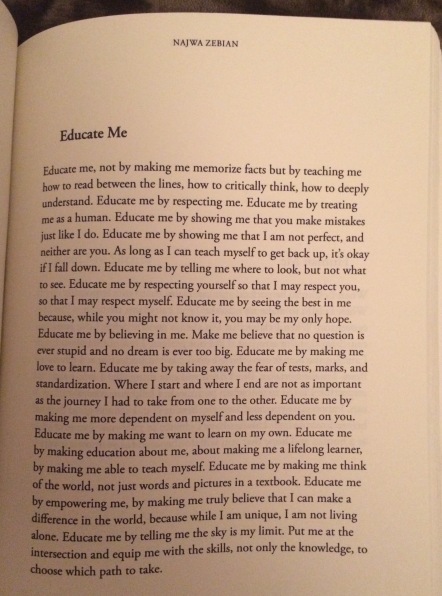

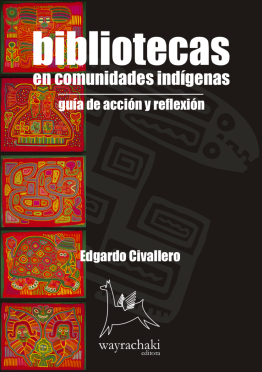 When I came across Edgardo Civallero’s (2007) publication entitled,
When I came across Edgardo Civallero’s (2007) publication entitled, 
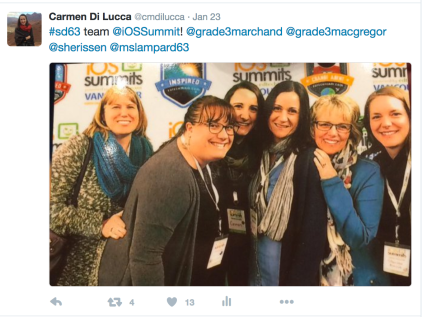
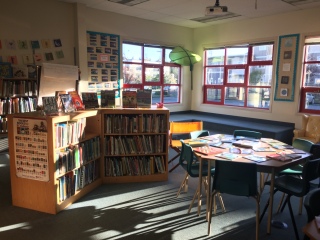

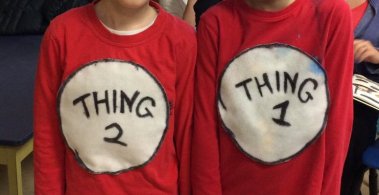
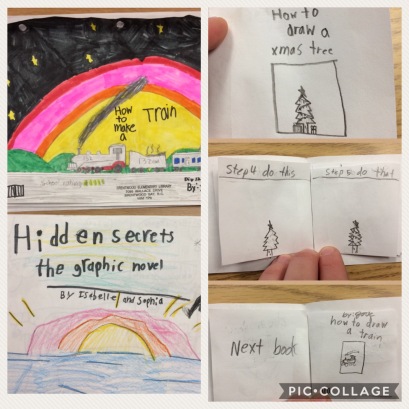
 Young Children in a Digital Age
Young Children in a Digital Age

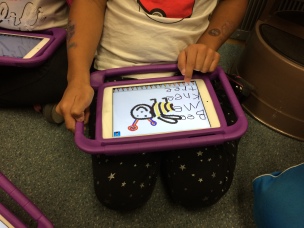
 The idea of the link between Core Competencies and Digital literacies came up by chance the other day during a Sphero session with my Grade 4/5 class. We recently got a set of Spheros at our school and so it has been an exciting new venture for our community. While watching my students engage in small groups with the Spheros I realized how they were unknowingly practising all of the Core Competencies as they worked through the challenges of driving and programming their device to follow a specific path. Following this activity we had an informal discussion about which Core Competencies had been practised and many connections were made. This sparked in me an interest in how we can further link core competency teaching/reflecting with digital literacies in our classrooms.
The idea of the link between Core Competencies and Digital literacies came up by chance the other day during a Sphero session with my Grade 4/5 class. We recently got a set of Spheros at our school and so it has been an exciting new venture for our community. While watching my students engage in small groups with the Spheros I realized how they were unknowingly practising all of the Core Competencies as they worked through the challenges of driving and programming their device to follow a specific path. Following this activity we had an informal discussion about which Core Competencies had been practised and many connections were made. This sparked in me an interest in how we can further link core competency teaching/reflecting with digital literacies in our classrooms.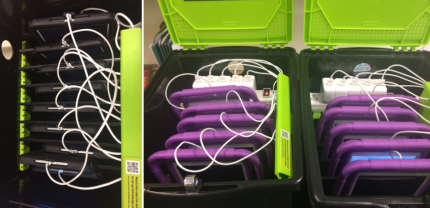 The last area that seems to be an ongoing issue is the actual maintenance and upkeep of technology at school. While this may not seem totally relevant to actual digital literacies I think that it is in fact extremely relevant because without proper upkeep and maintenance we would be unable to effectively use the technology that allows our students to develop their digital literacy skills. While we are making do at the moment with our technology upkeep and maintenance it is a large job and I still question what the best practice might be in terms of keeping everything running smoothly. We are so fortunate at our school to now have 40 iPads, 25 chrome books, and 12 spheros but with these tools comes great responsibilities and a commitment to the proper care and maintenance in order to ensure they are useable tools for our 300+ student body.
The last area that seems to be an ongoing issue is the actual maintenance and upkeep of technology at school. While this may not seem totally relevant to actual digital literacies I think that it is in fact extremely relevant because without proper upkeep and maintenance we would be unable to effectively use the technology that allows our students to develop their digital literacy skills. While we are making do at the moment with our technology upkeep and maintenance it is a large job and I still question what the best practice might be in terms of keeping everything running smoothly. We are so fortunate at our school to now have 40 iPads, 25 chrome books, and 12 spheros but with these tools comes great responsibilities and a commitment to the proper care and maintenance in order to ensure they are useable tools for our 300+ student body.







